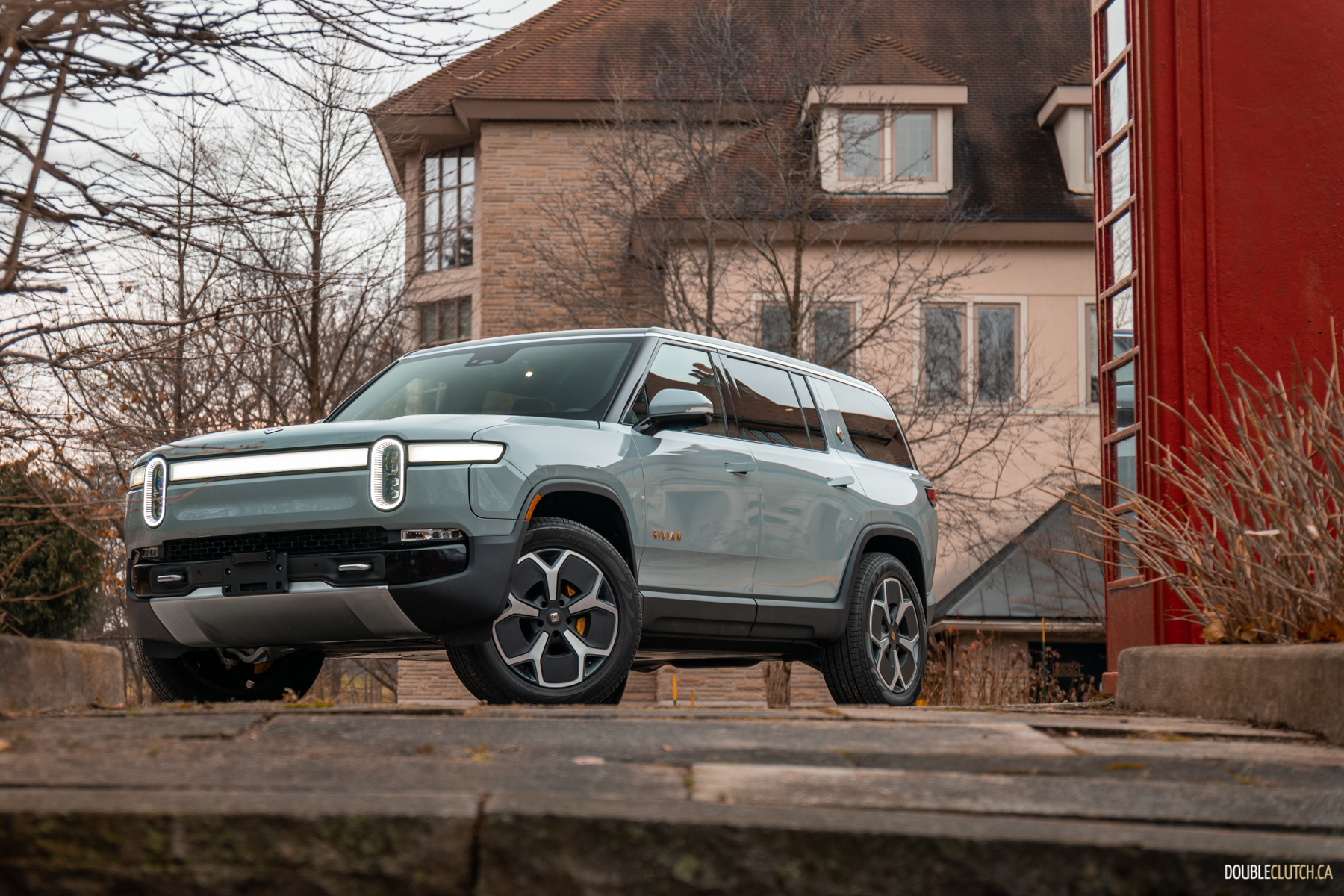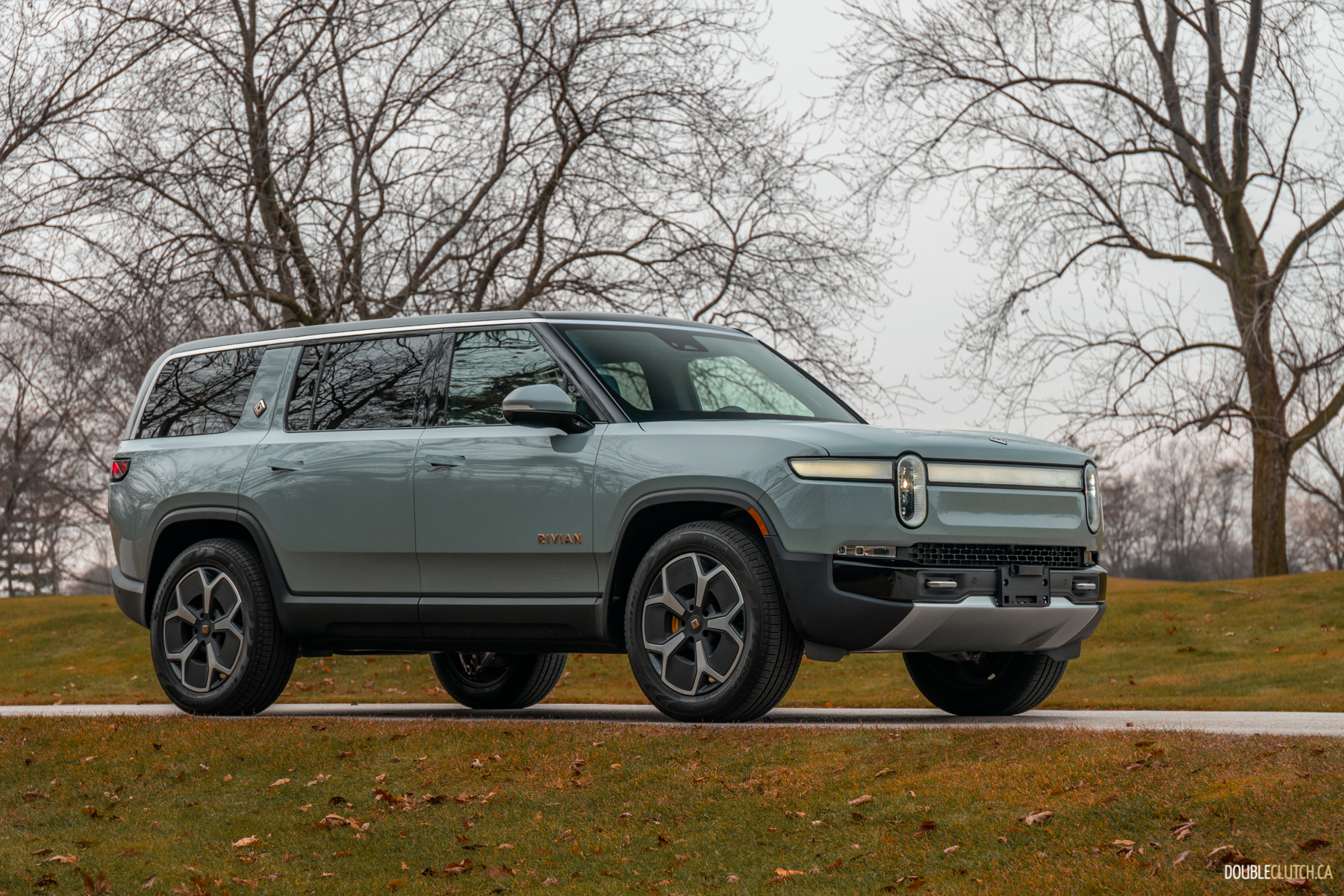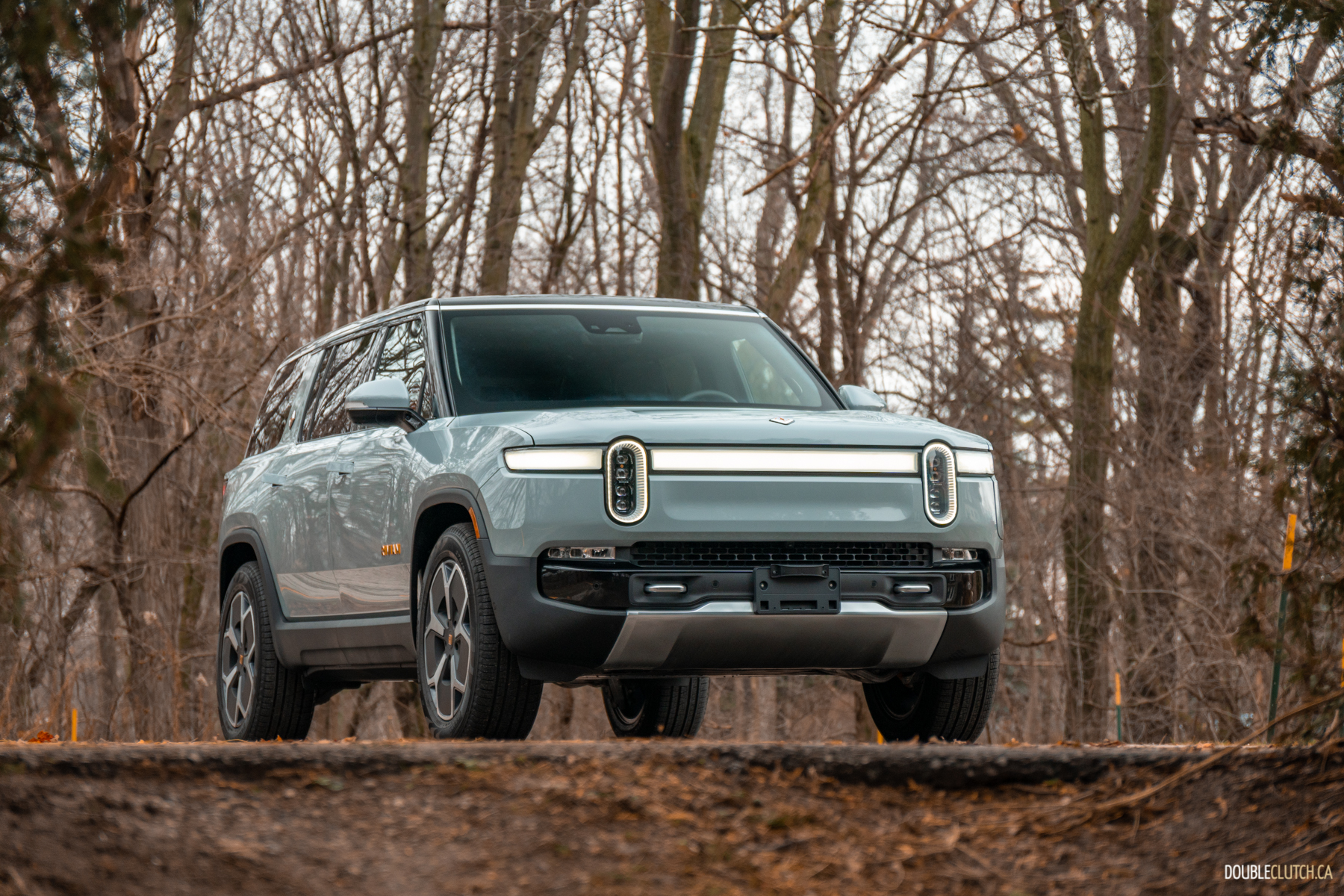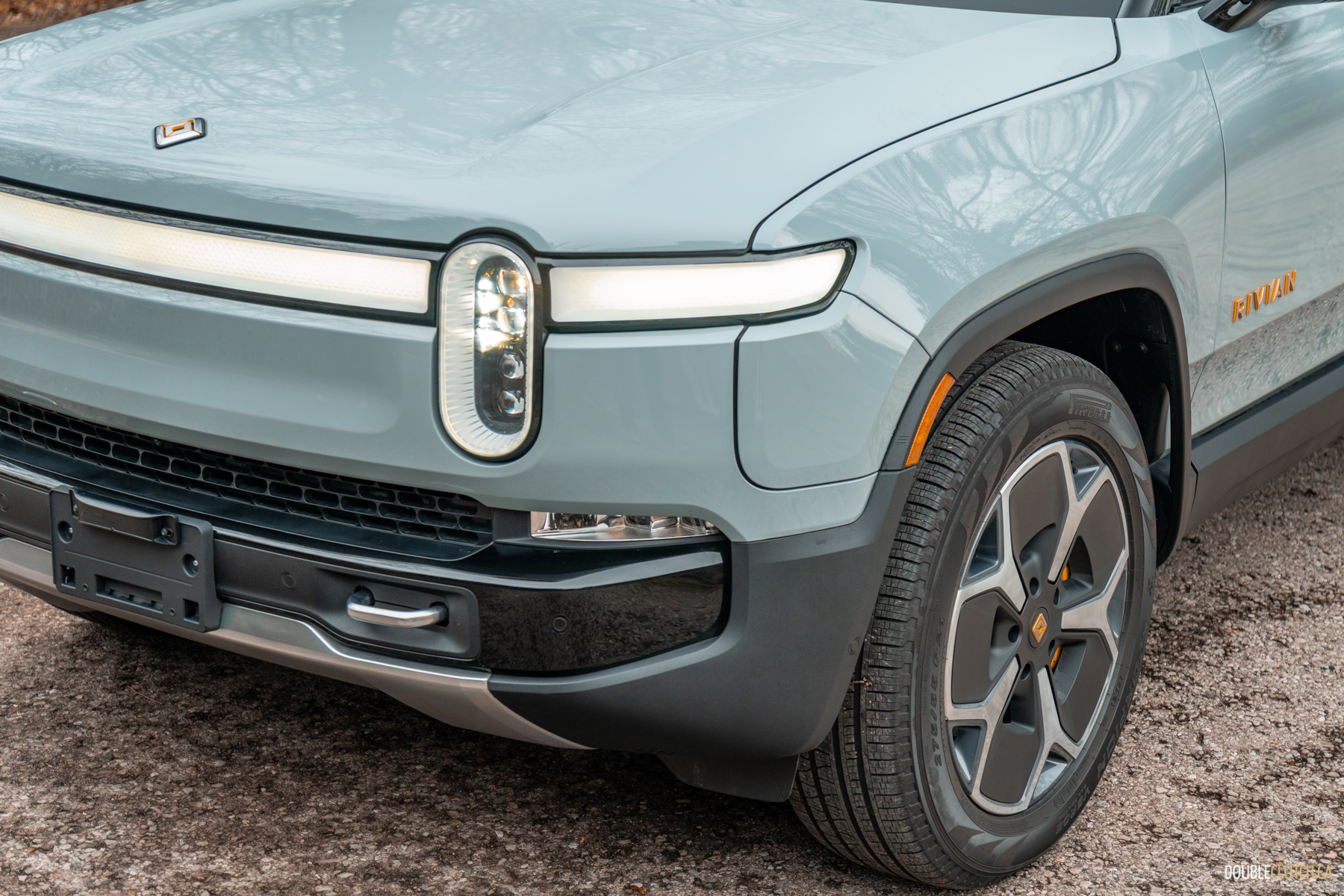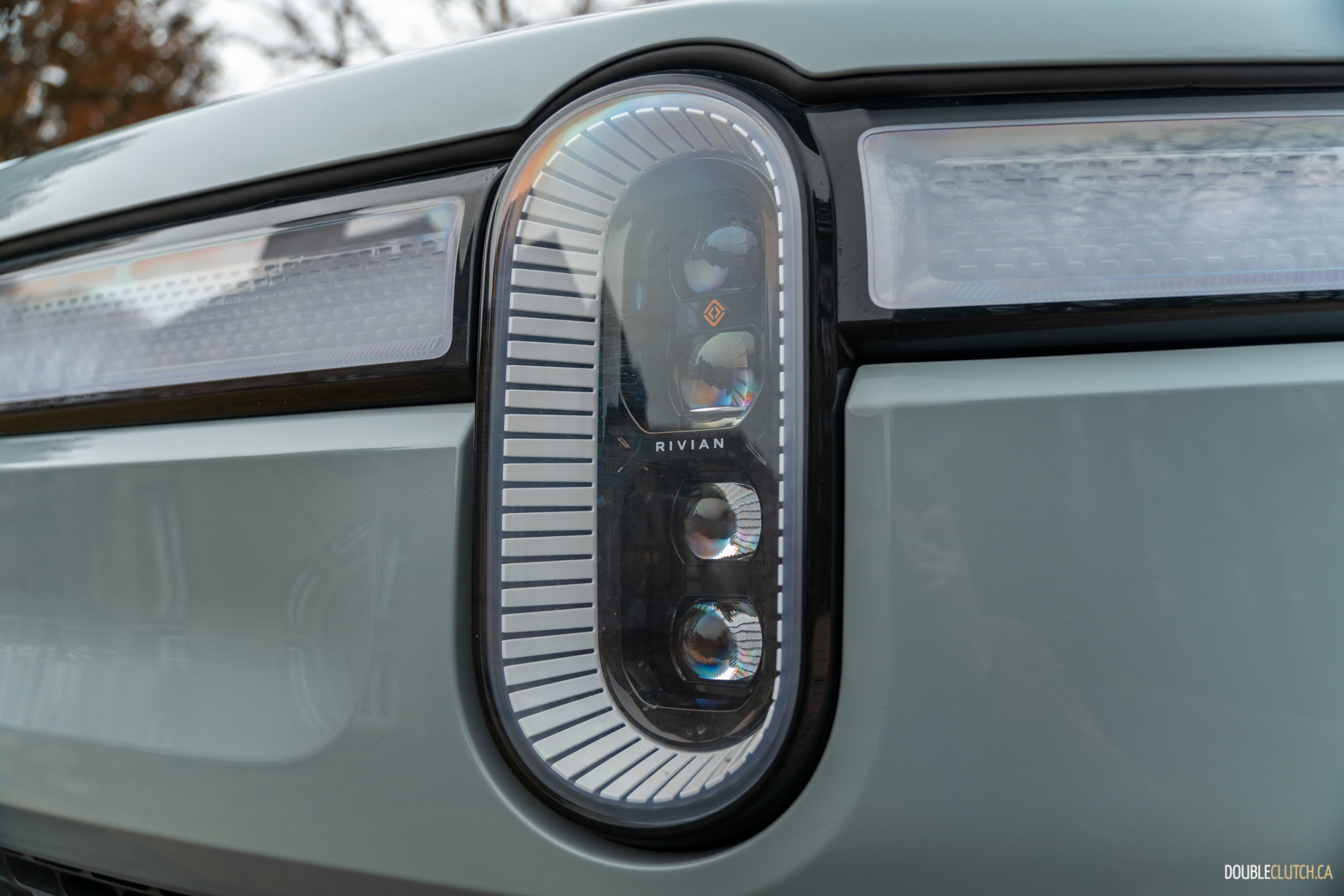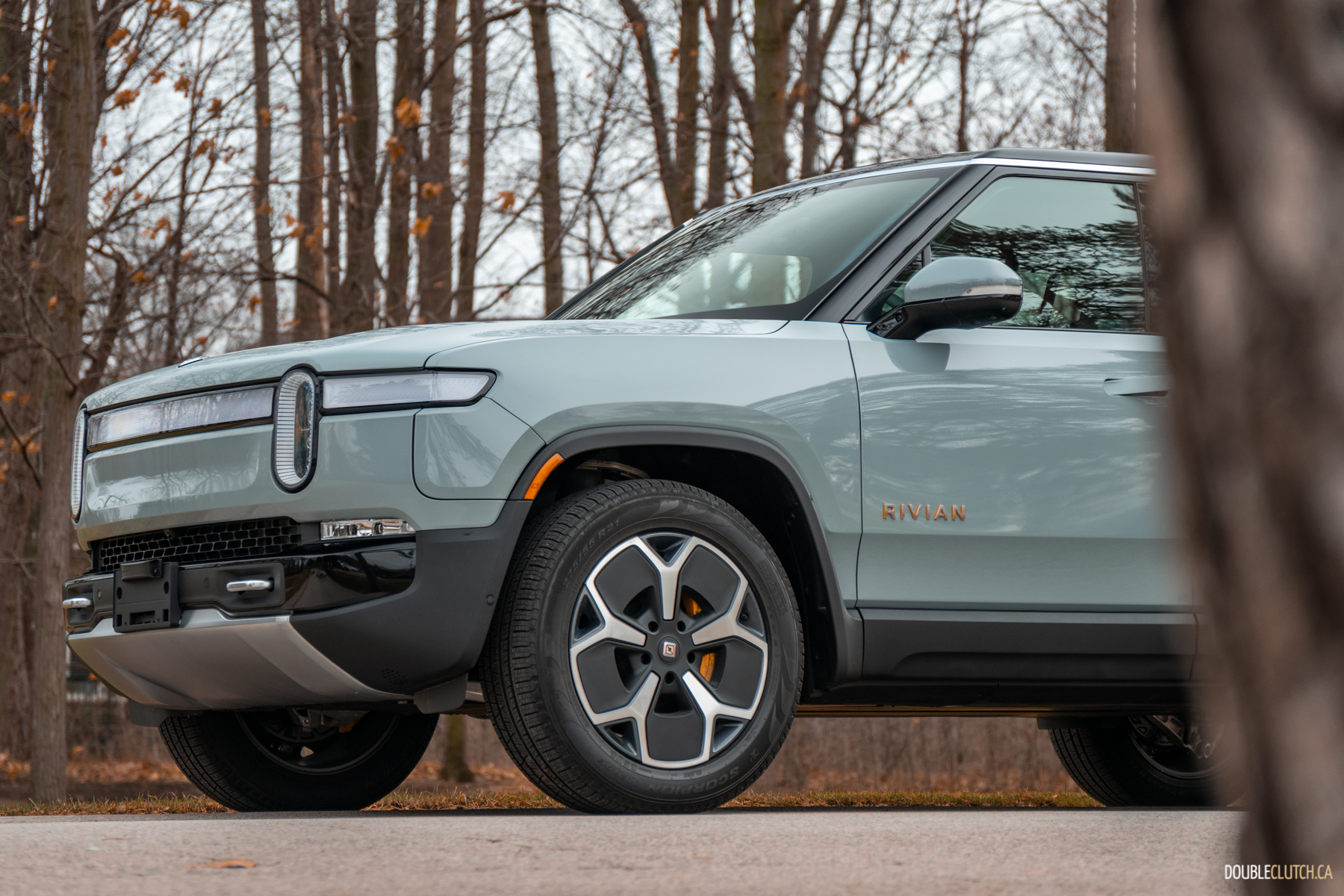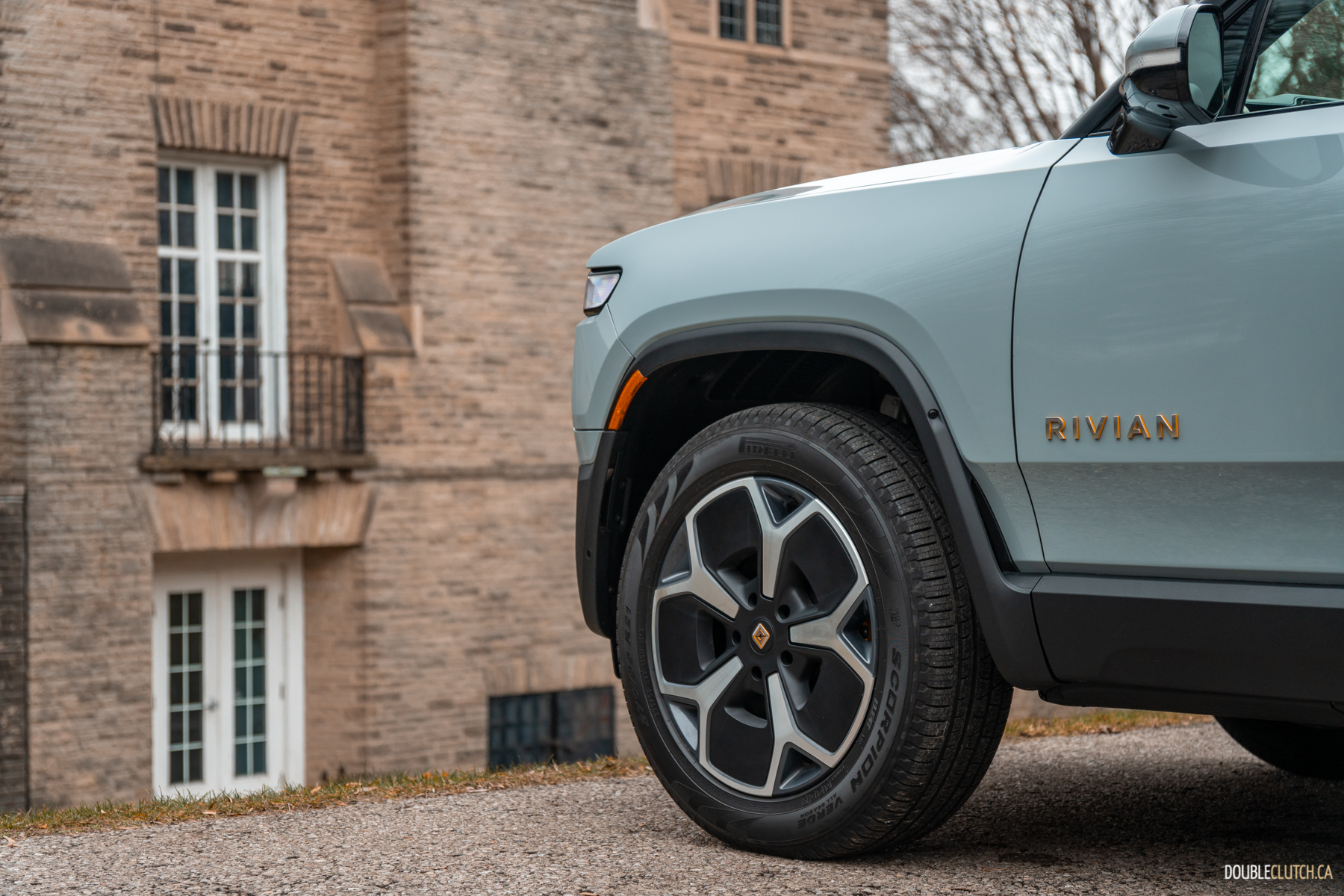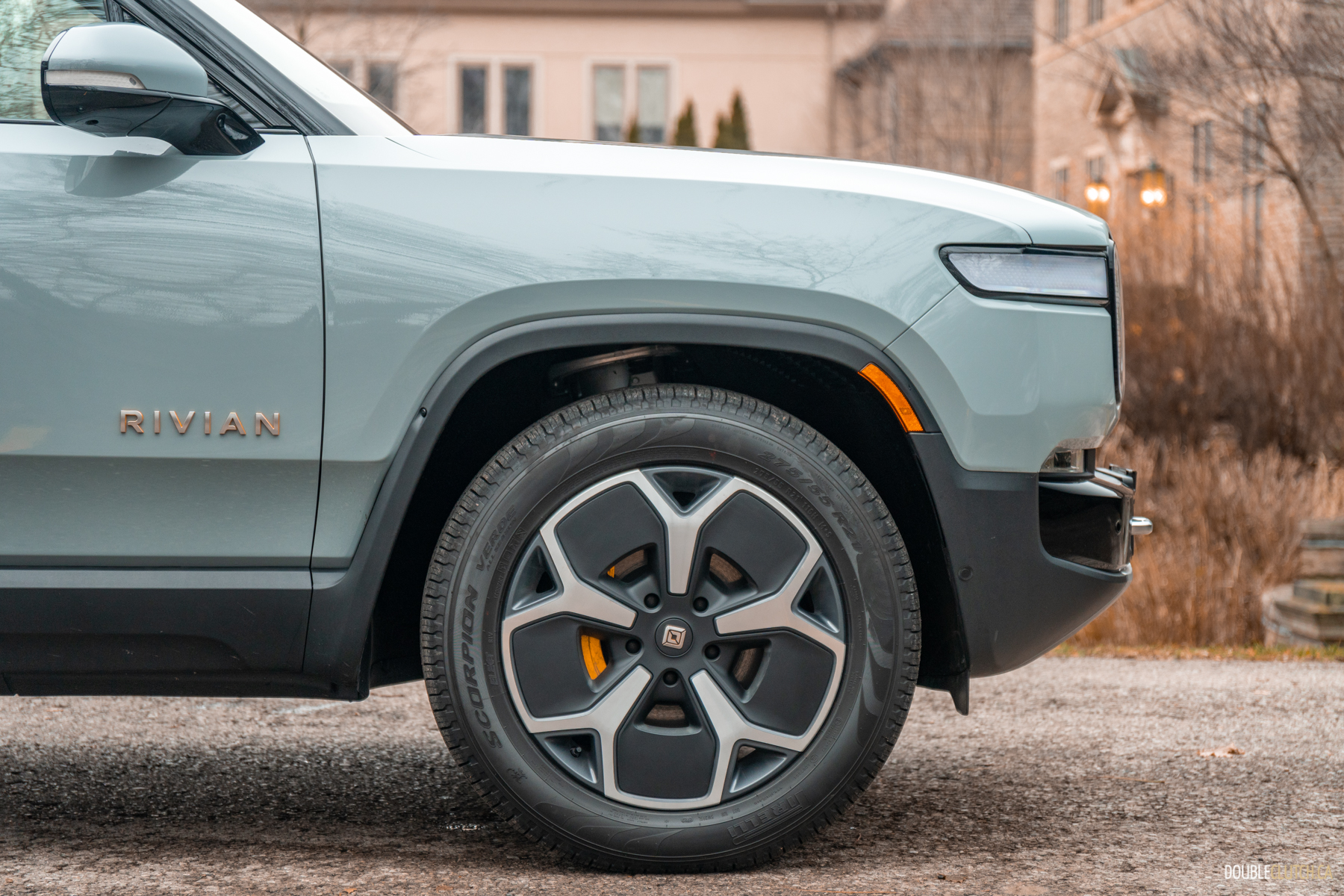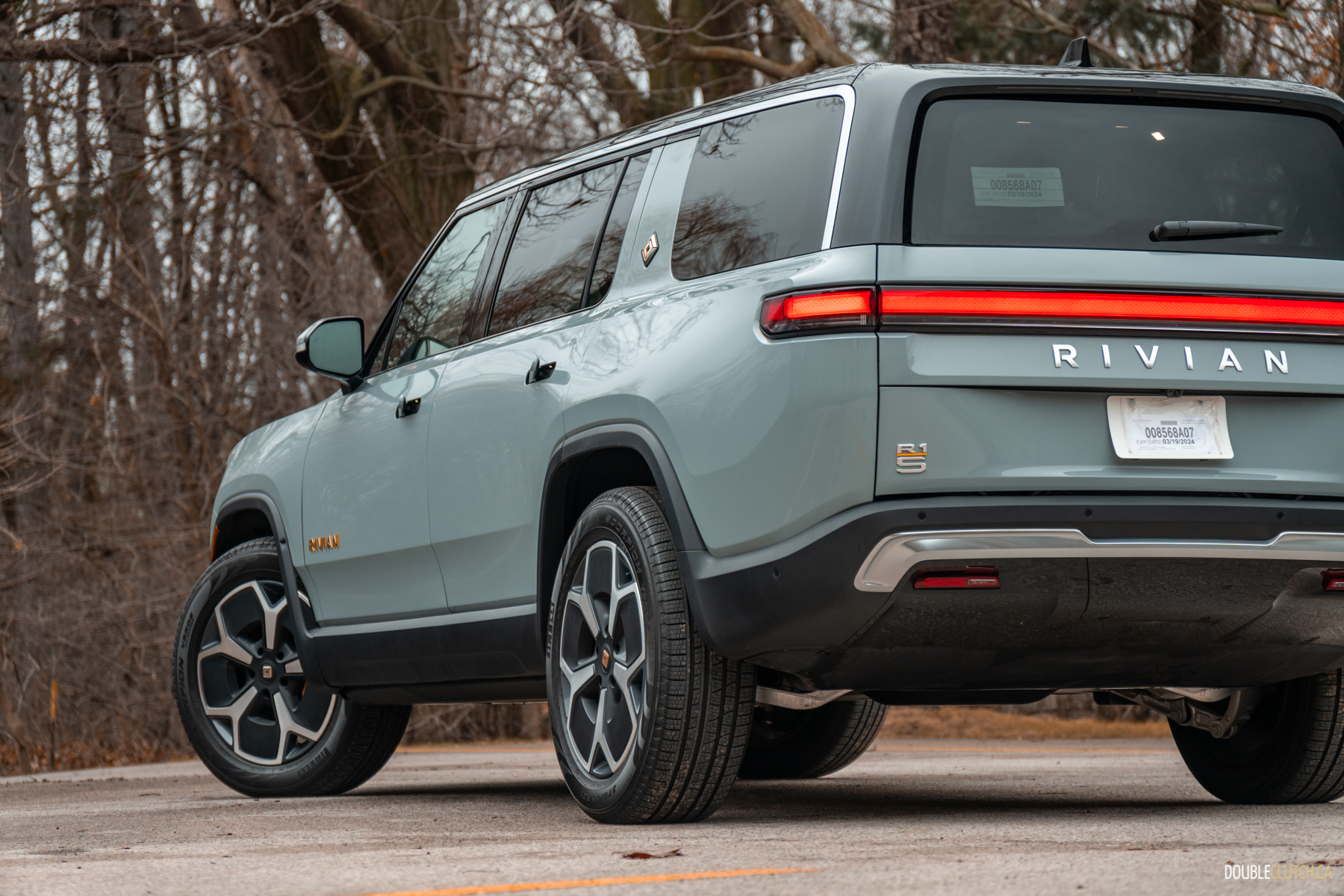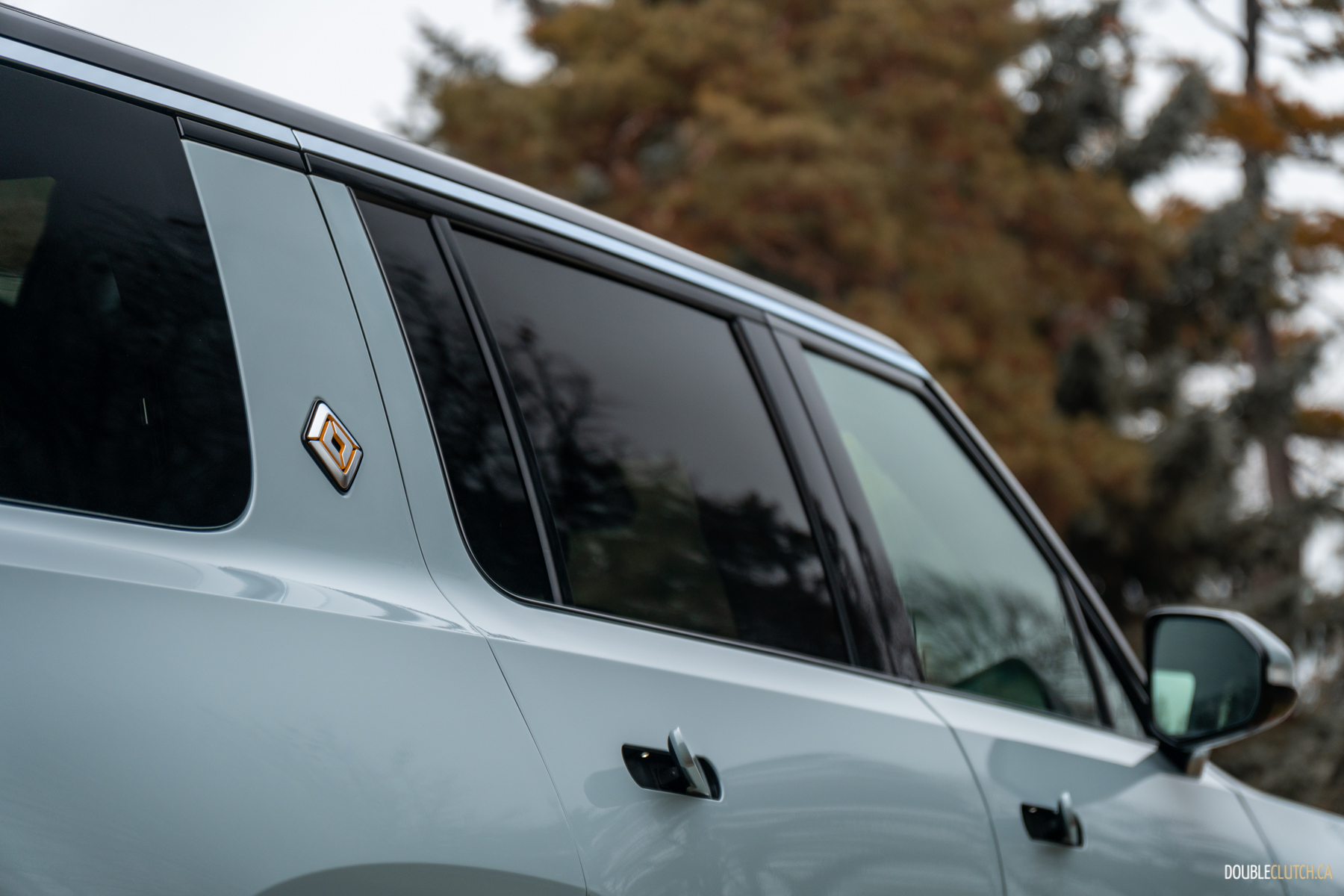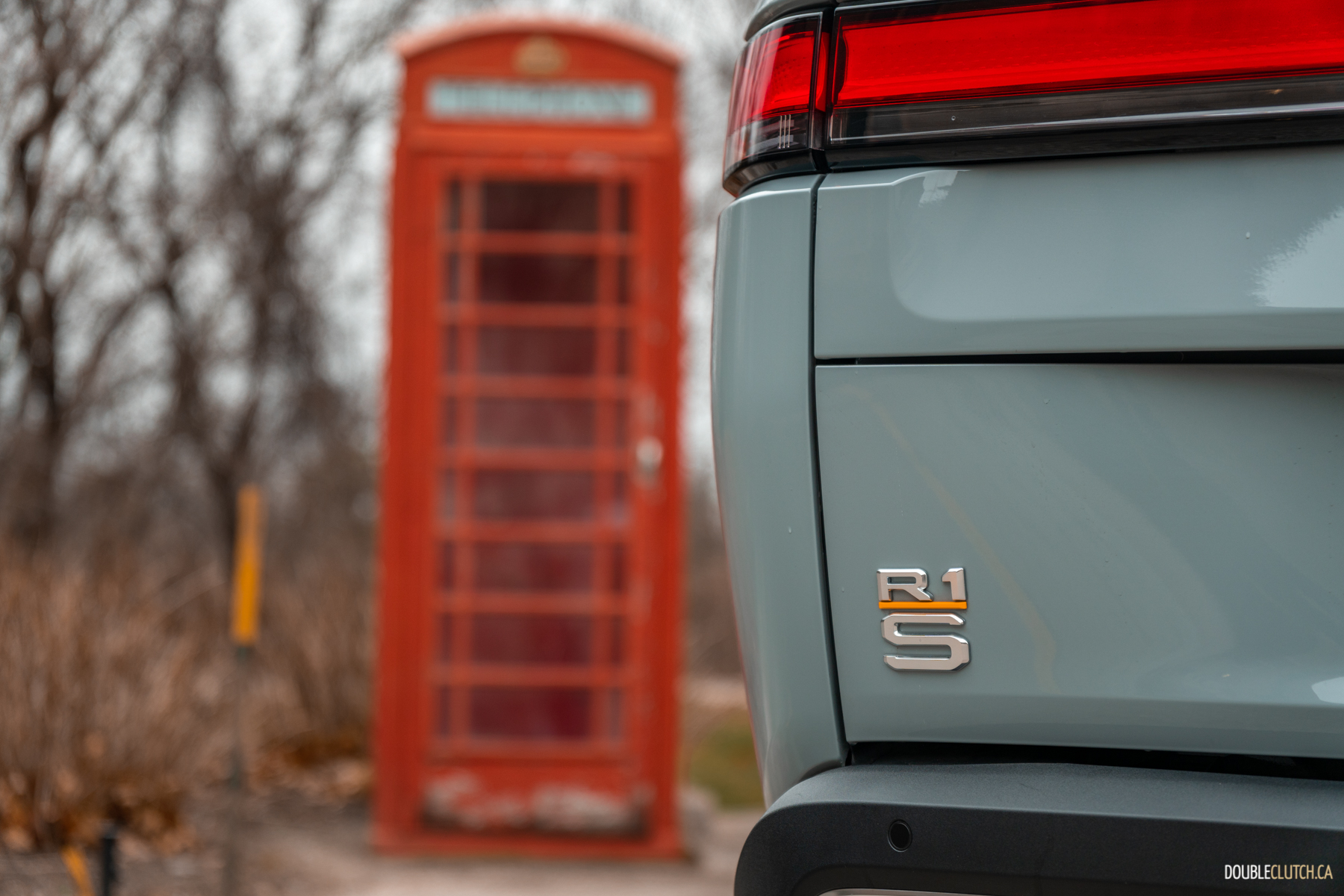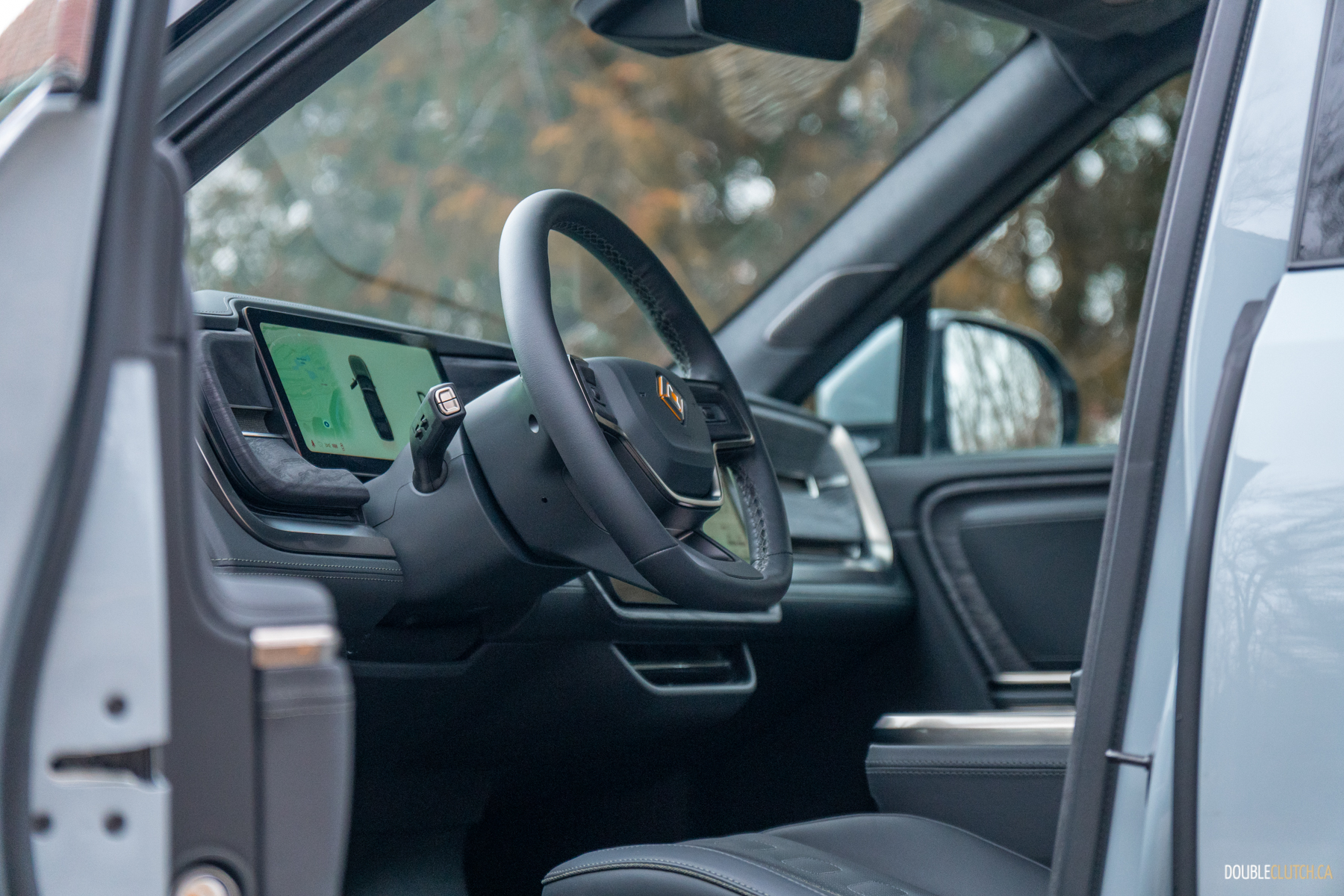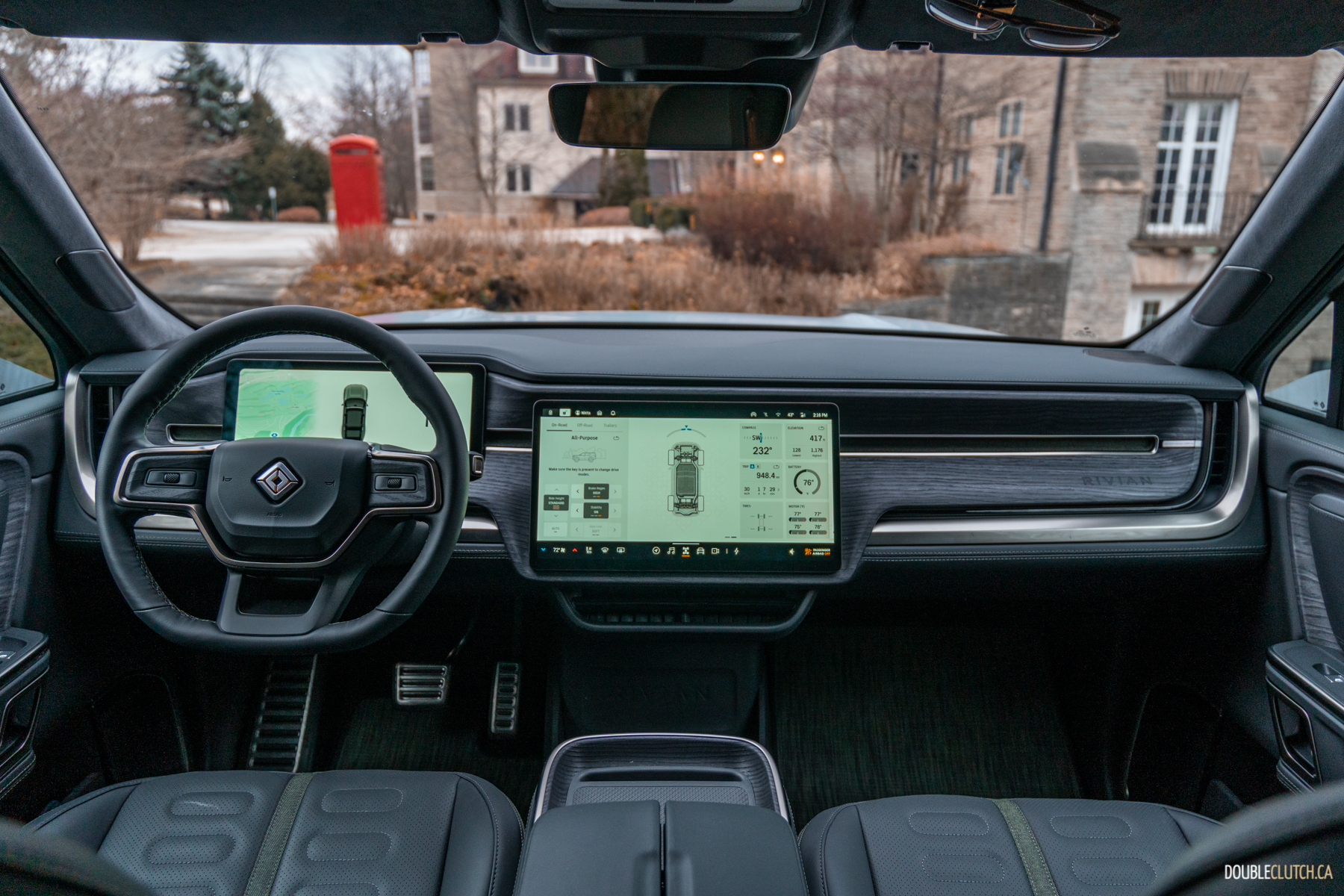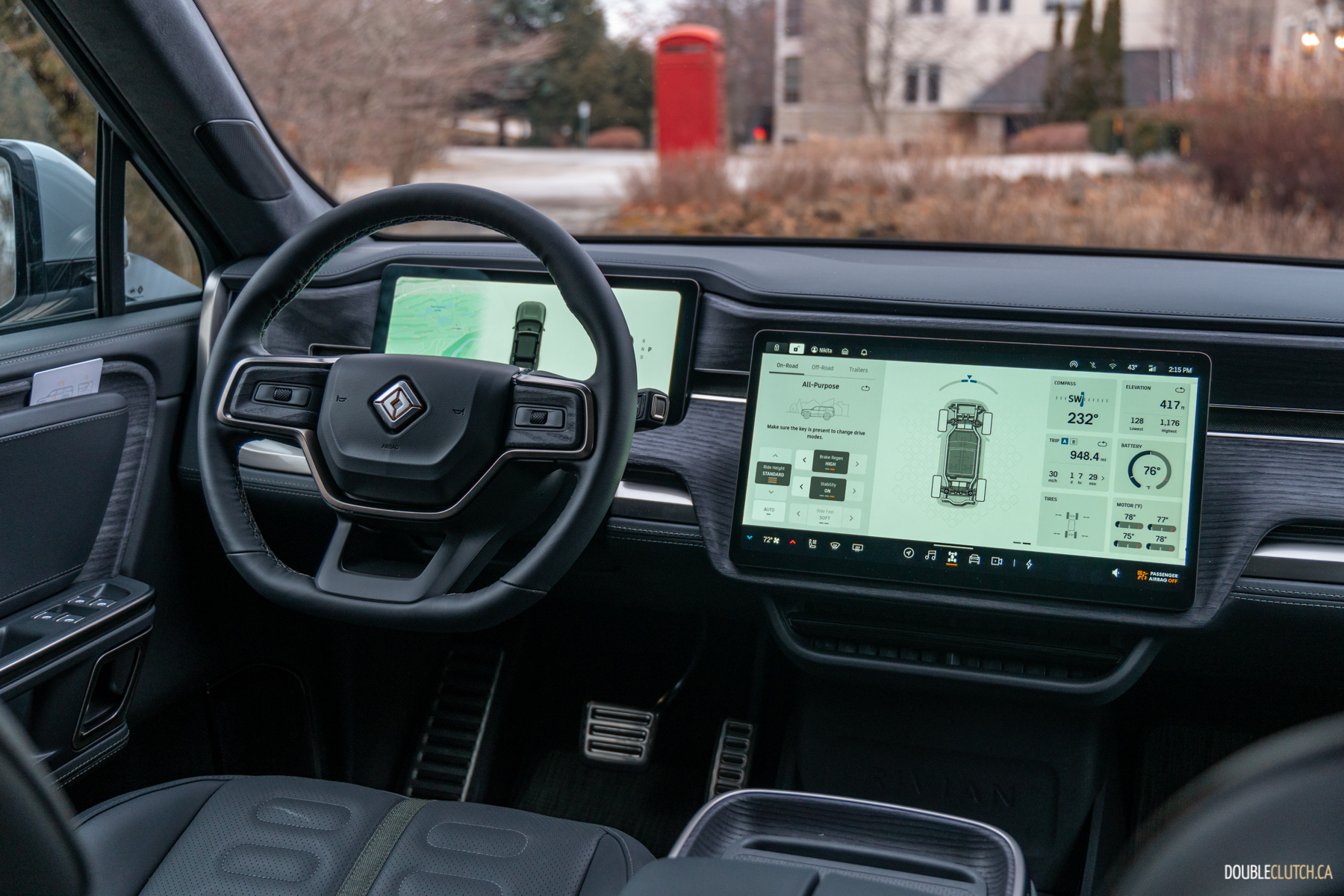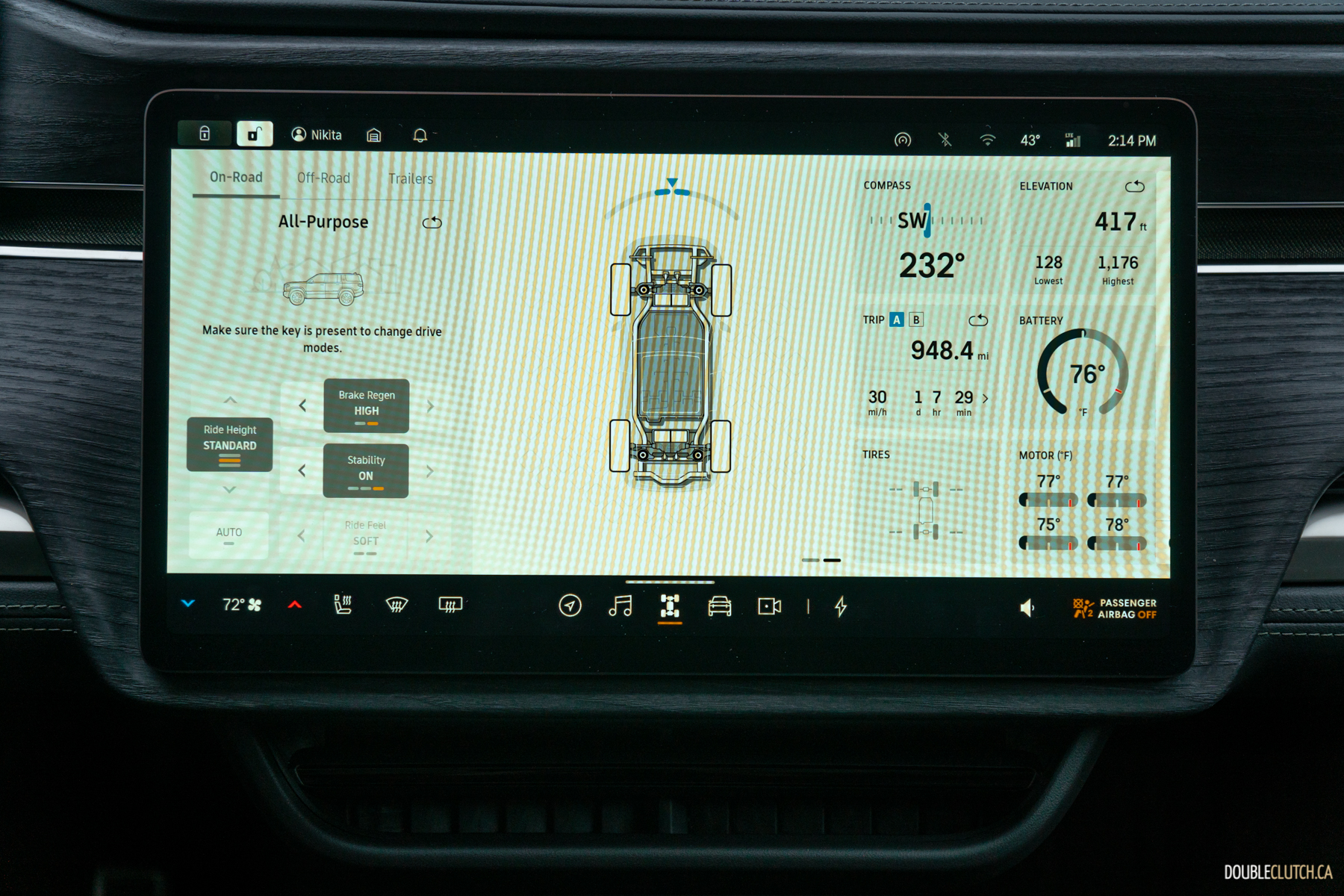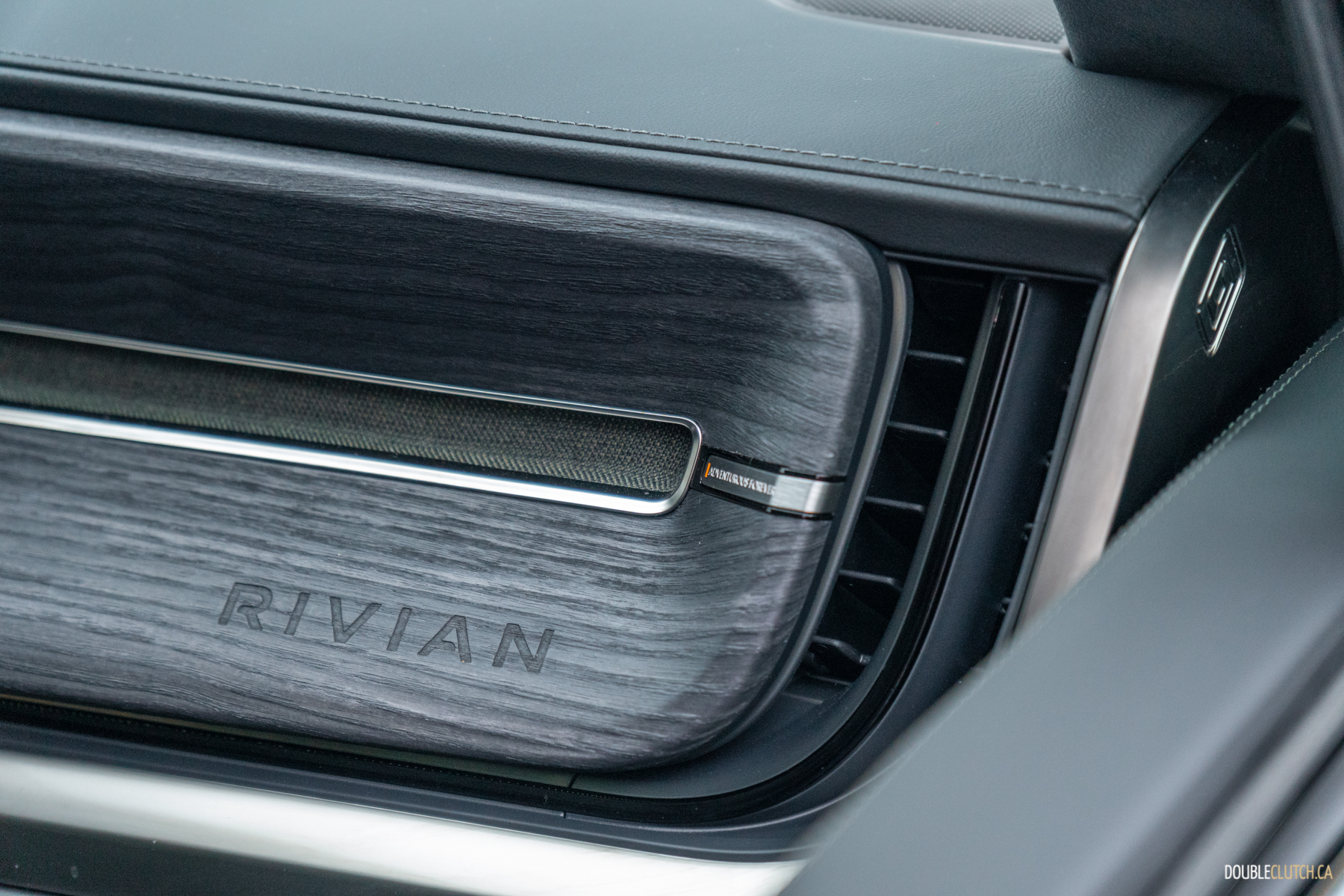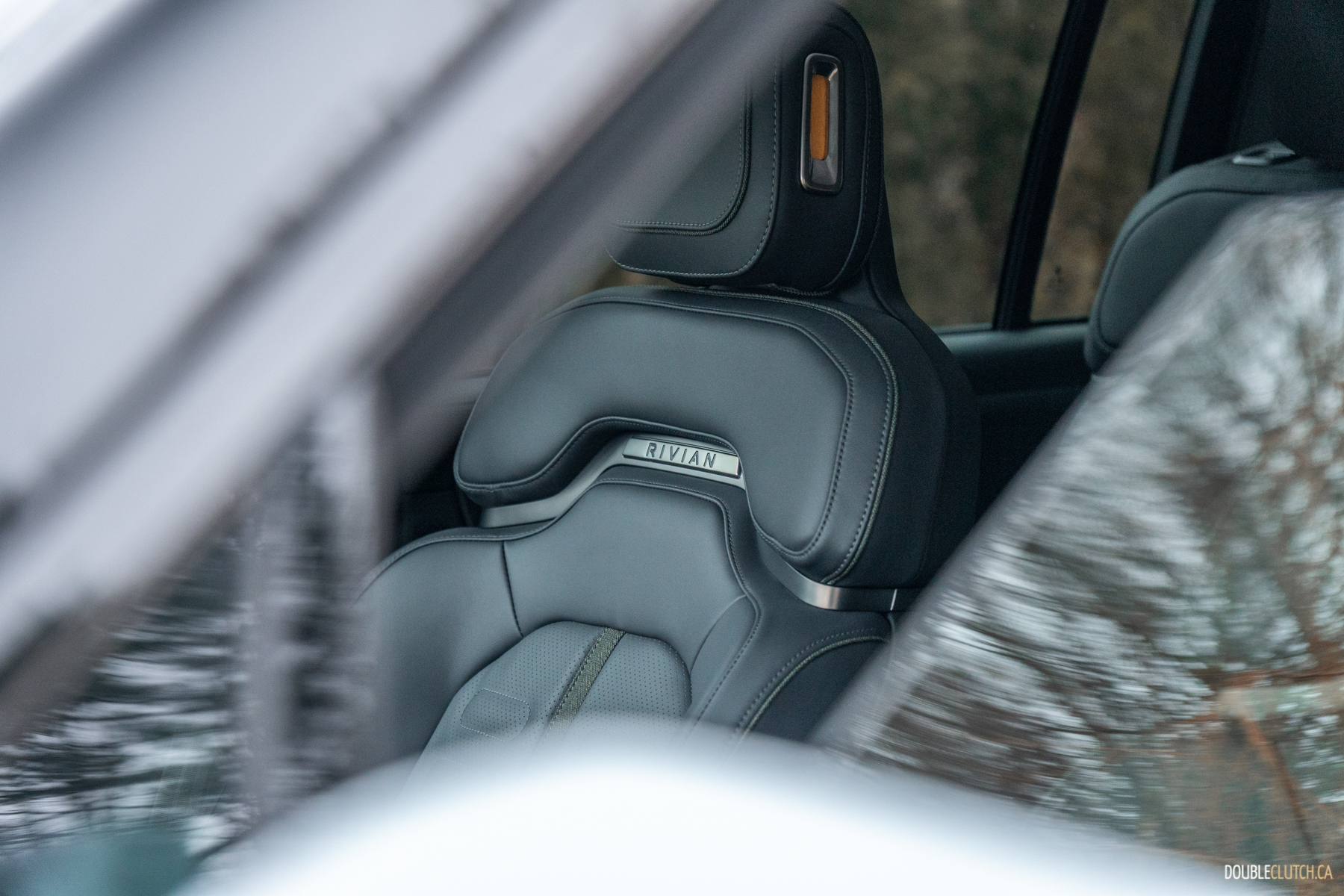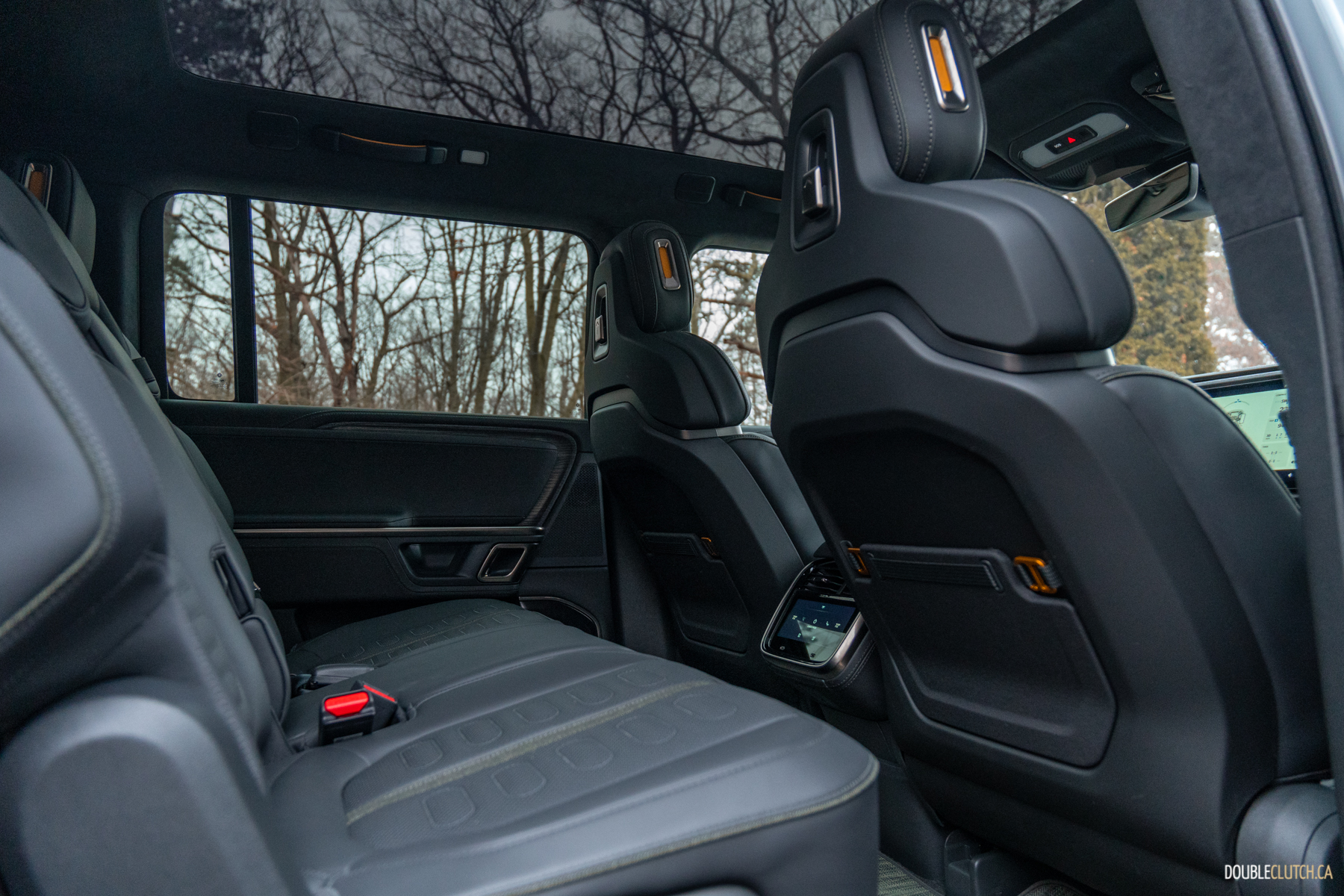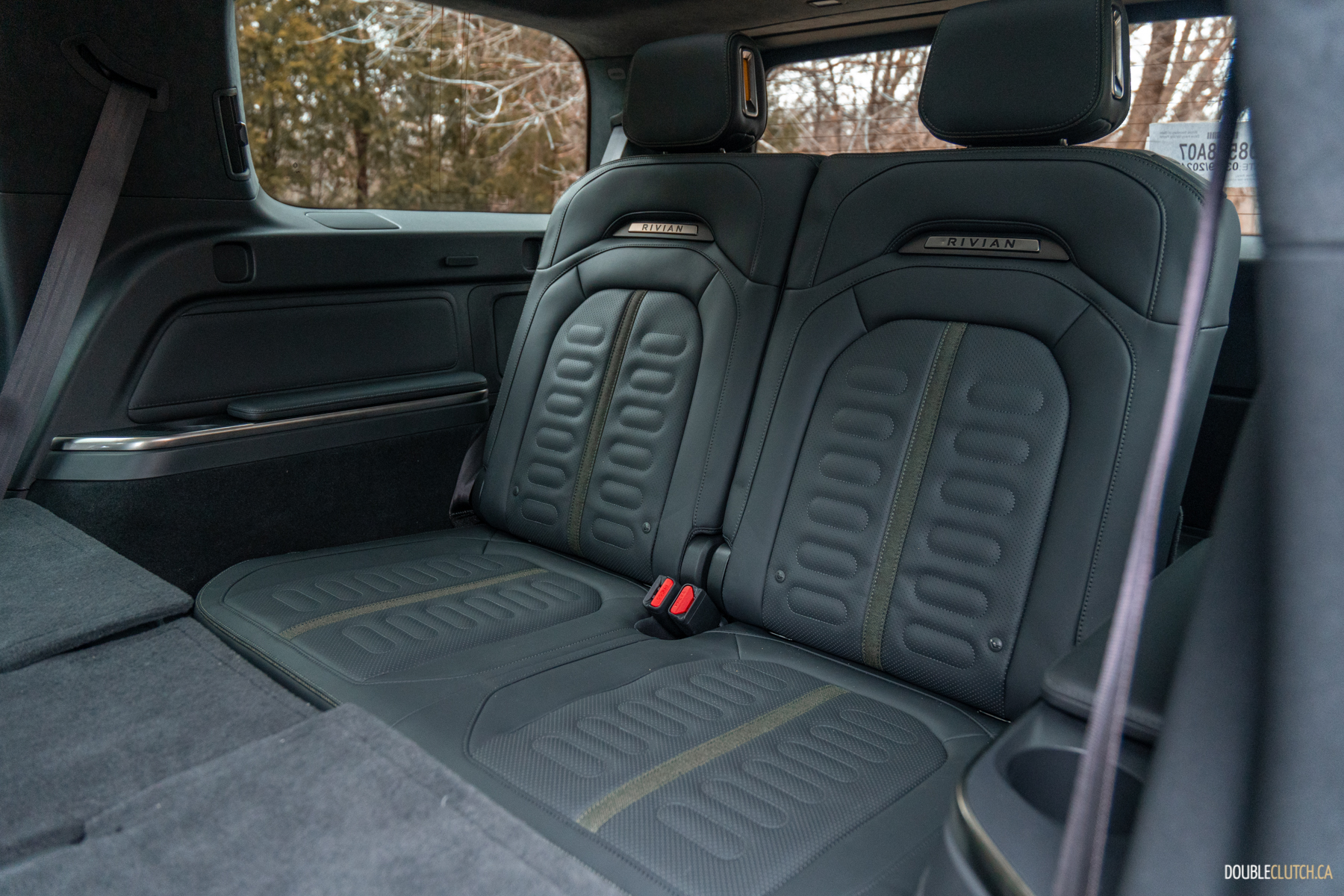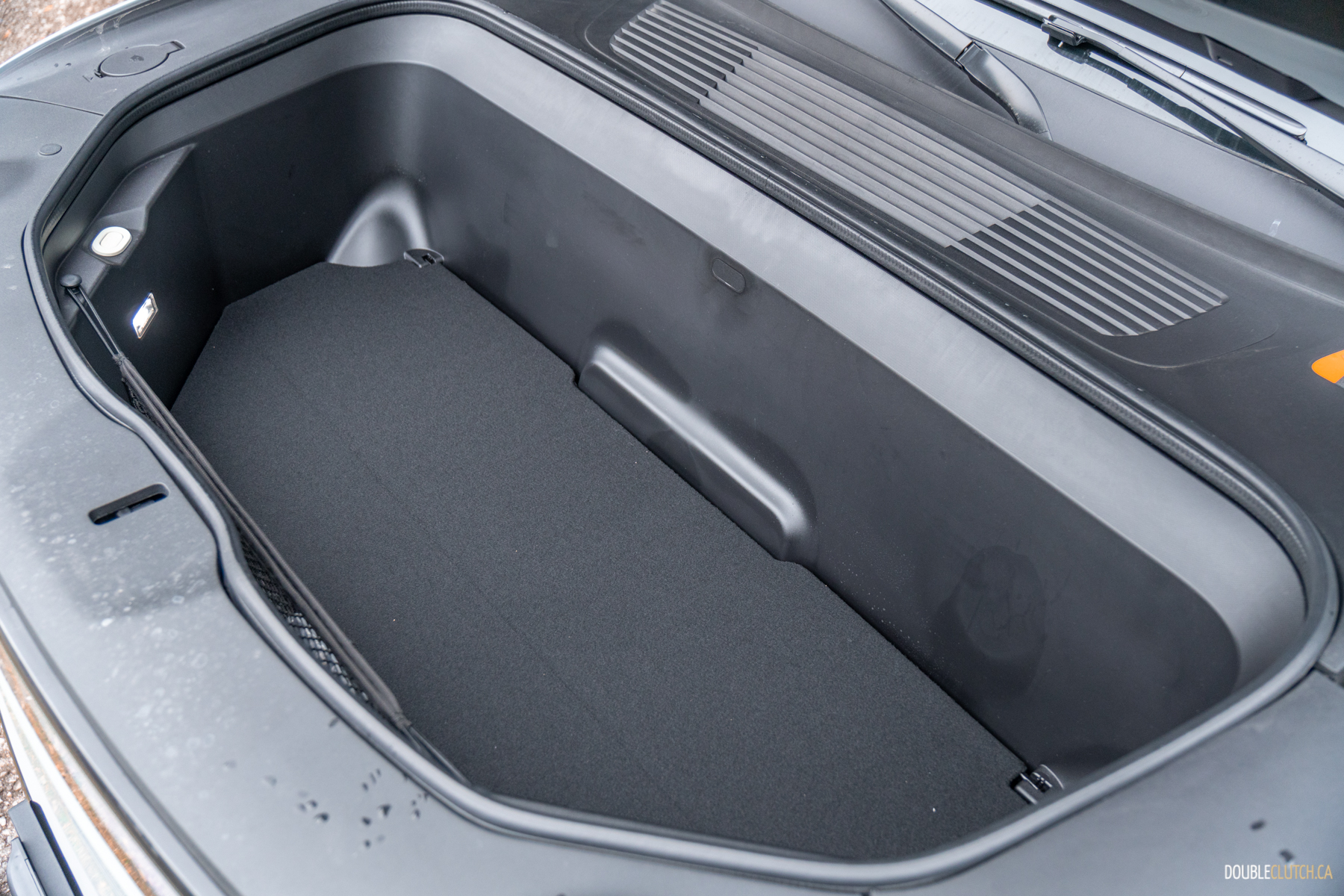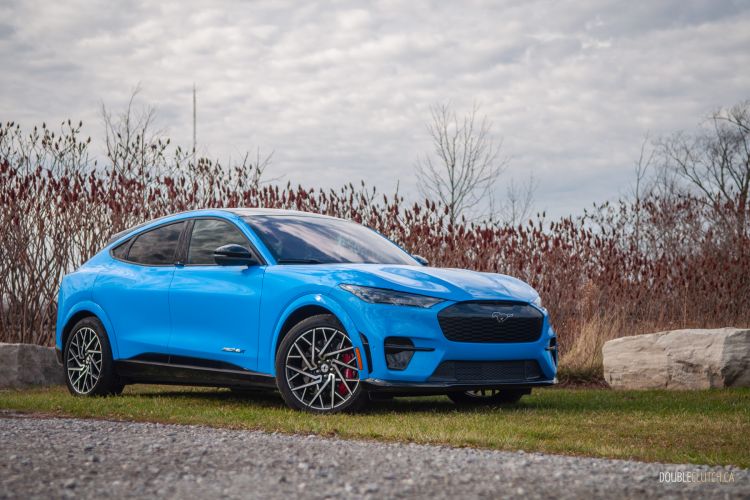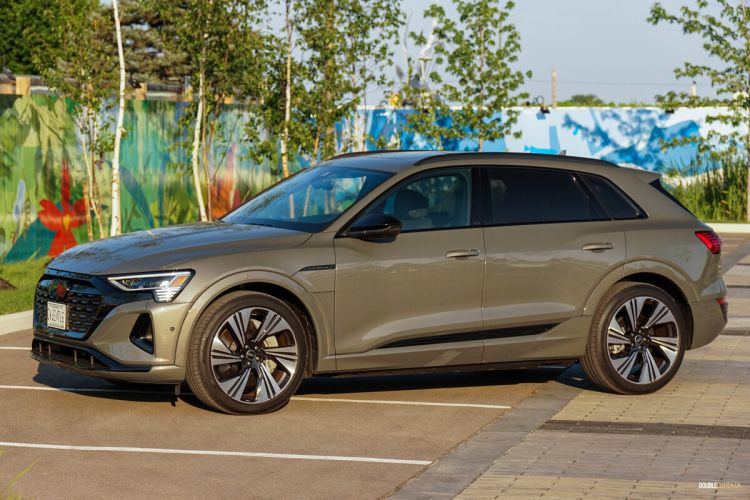I completely forgot Rivian existed until I saw a few of them on the road in the U.S. I remembered reading about them; this California-based EV startup promised enough range to the moon, had an attractive design ethos, and acquired an existing car manufacturing plant … or something, maybe? I didn’t pay too much attention because I’m cynical and they just sounded like every other EV startup, over-promising and under-delivering, if delivering at all. It turns out I was wrong, because they’ve delivered quite a few in the U.S. One of those — specifically a 2024 Rivian R1S — snuck up here for us to sample before rolling out en masse in Canada.
The young Rivian brand has had more than their fair share of very public headaches bringing a new vehicle to market, including a dissolved partnership with Mercedes-Benz and a shaky agreement with Amazon, along with what could almost be called a backlash against EVs in the broader market. Legacy OEMs — Ford being the loudest among them — have been increasingly vocal about the challenges and exorbitant costs of trying to market an EV. Rivian’s been a victim of this too, losing an average of more than $40,000 on every vehicle they’ve sold. Consumer sales have been softening too, since the depreciation on EVs has proven to be less of a curve and more of a cliff.
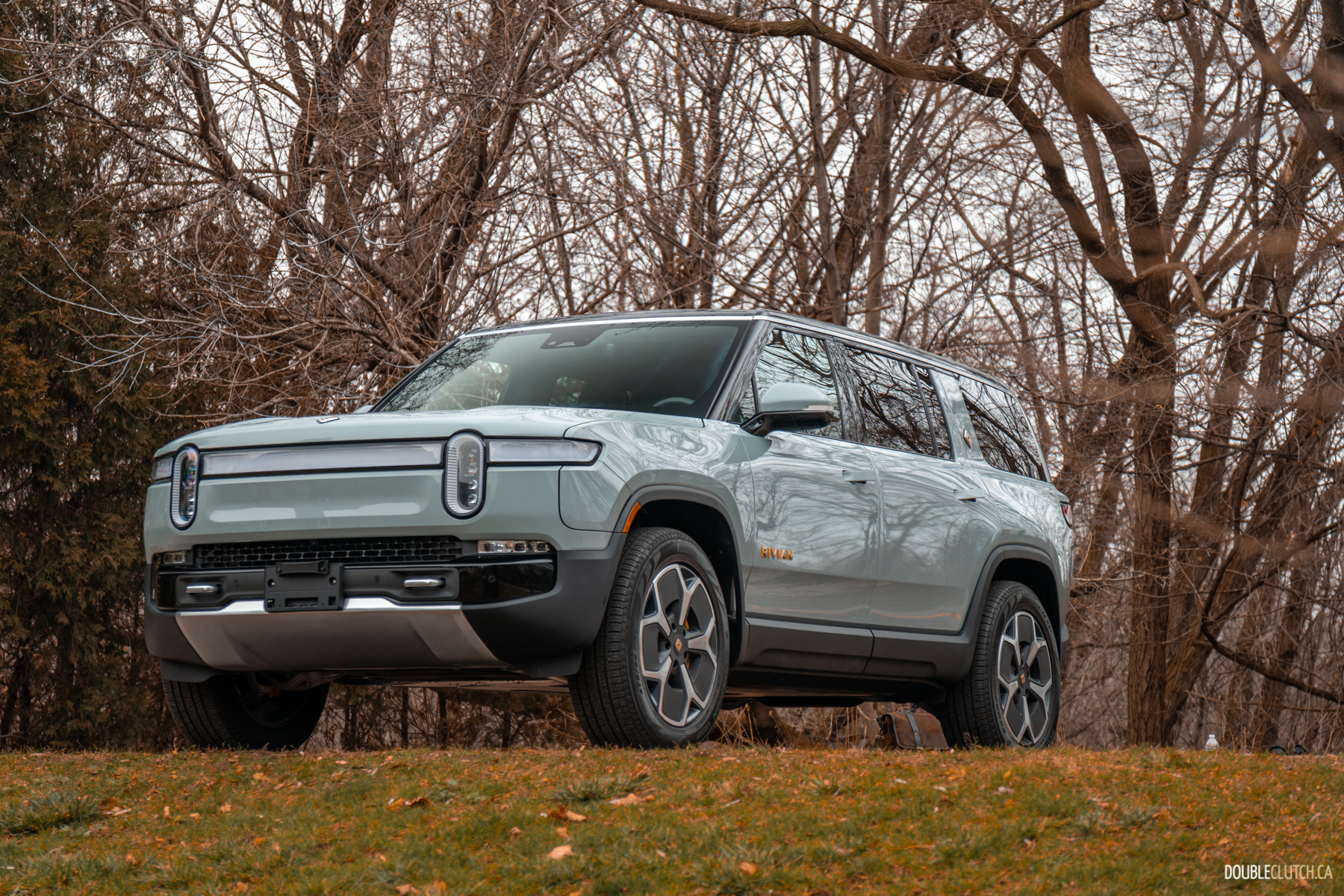
None of this has deterred Rivian, who have shown substantial growth in every quarter. To date, they’ve built more than 60,000 vehicles since production began at the end of 2021 in the former Mitsubishi plant in Illinois. Okay, so they’ve broken away from the biggest trap of EV startups, perpetually on the verge of maybe delivering a handful of vehicles to a handful of people, definitely by the end of the quarter, for eight quarters in a row. They are delivering, but are they delivering what they promised?
Rivian leans heavily on the adventurish, off-roady lifestyle thing in their marketing, promising capability in any condition, over any terrain, and enough range to get yourself back to civilization. The decked-out R1S we drove has four motors, and as such can dial out power to its four wheels with extreme precision, for absolutely unprecedented unstuckability. Its air suspension system can raise to 14.9 inches of ground clearance and crawl over nearly anything, with steep 35.6- and 34.3-degree approach and departure angles. It can also wade through three feet of water, and can scale a 100 per cent grade.

Said four motors produce a combined 835 horsepower and an honestly measured and reported 900 pound-feet of torque, unlike a certain other California-based EV startup that’s taken a liking to lofty torque measurements that are only technically true. Those four motors are powered by a beast of a battery pack, with a total capacity of 135 kWh, leading to a max range of 514 kilometers. It may not sound like much at first, but when you consider the amount of performance this nearly 7,000-pound sculpted brick offers, it’s very impressive.
It’s not all numbers and figures, though. The R1S is genuinely lovely, looking like a million bucks and perfectly nailing the tuff-chic style that’s gotten so popular thanks to flex-worthy “lifestyle” vehicles like the Mercedes-Benz G-Wagen and Land Rover Defender. It simultaneously looks avant-garde and archetypal, with a handsomely minimalist fascia, clean surfaces, and classic boxy SUV proportions. The R1S got a lot of long stares — he same kind I gave when I first saw one last year.
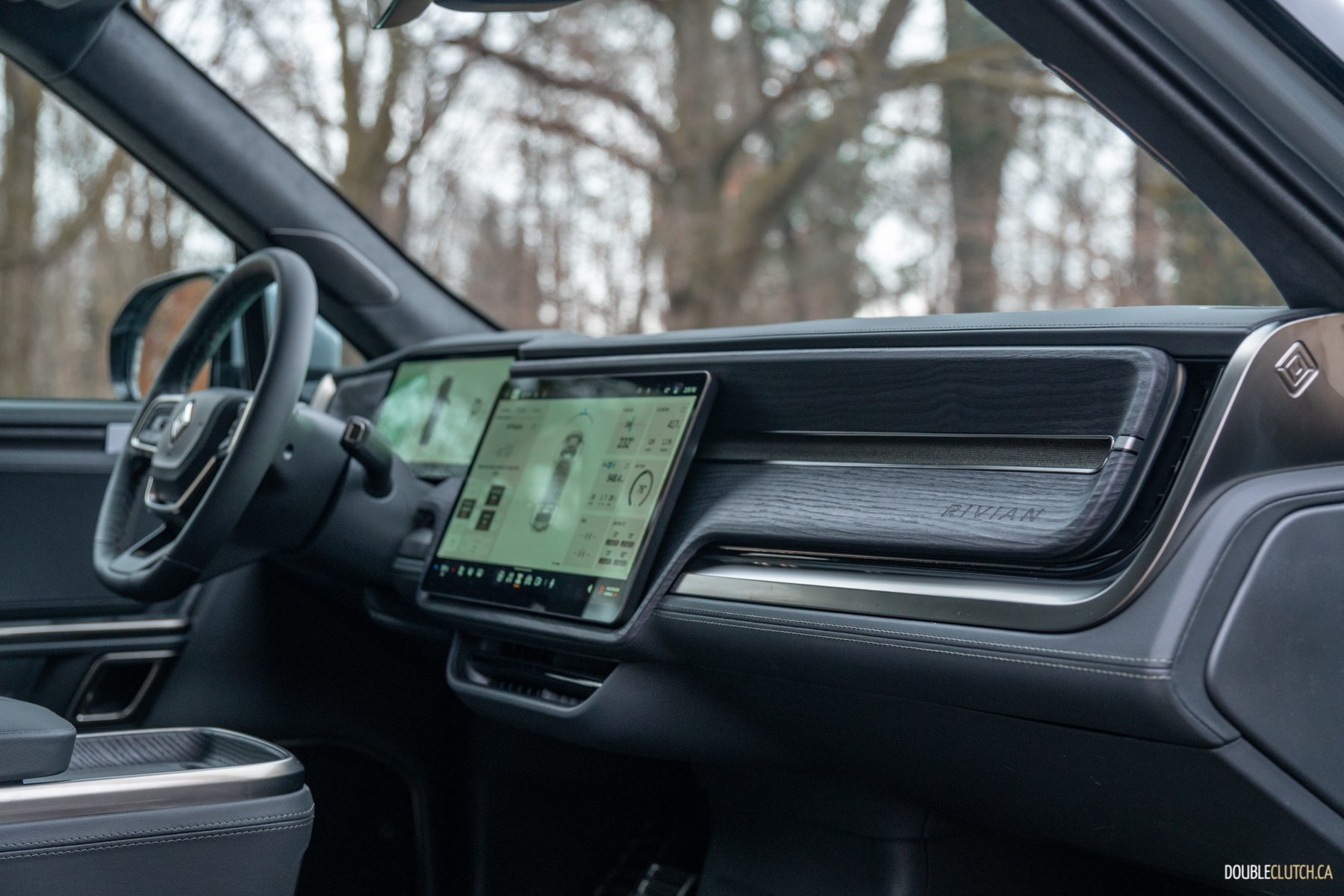
The loveliness continues inside, where the R1S impresses with carefully chosen materials and thoughtful design. The dash is framed by satin metallic trim accents, finished with open-pore dark ash wood on the dash and door cards. Everything is wrapped in vegan (read: synthetic) leather or soft-touch plastics, and whatever limited switchgear there is, feels excellent. The overwhelming majority of controls are handled by an ultra-wide 15.3-inch touchscreen framed in the centre of the dash, with only the usual combination stalks, plus a pair of scroll wheels with left/right selectors, on the steering wheel.
I loathe having everything locked behind a touchscreen, but thankfully, that single display doing much of the heavy lifting inside the cabin is handily among the best in the business. It’s crystal clear, with excellent contrast and inky black levels, and the touch response is about as close to perfect as I’ve ever seen. The software that runs it all is gorgeous, slick, and super snappy. There are shortcuts for climate, navigation, media, and vehicle vitals on-screen at all times, and the myriad of functions are all quite intuitive and easy to learn on the fly. It’s flanked by a 12.3-inch digital gauge cluster, which displays speed, range, a small map, and a breakdown of what the R1S’ many sensors are seeing at any given time, precisely tracking the movements of other cars, trucks, and pedestrians. Rivian got their start in the autonomous driving boom, and it’s always been a focus of theirs; while I’d need more time to fully flesh it out, I can say thus far that their semi-autonomous suite of adaptive cruise and lane-tracing are among the best I’ve ever encountered.
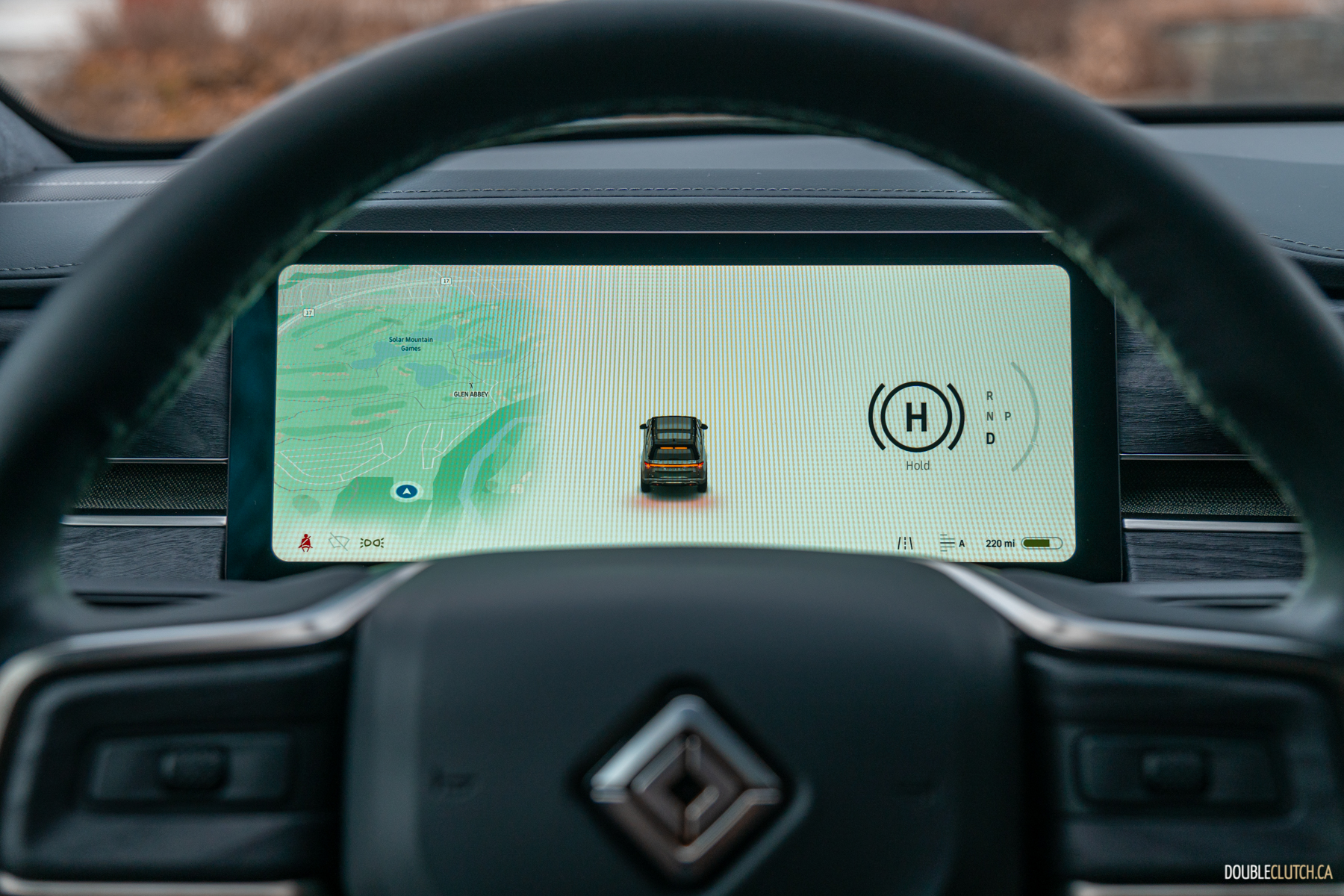
There’s a healthy amount of storage in the cabin, with expandable pockets on the doors and backs of the seats, plus a huge storage tray in front of the center console, which itself has a decent sized multi-tiered cubby along with a large wireless charging pad and a multitude of charging ports. The front seats have their own small storage drawers and are generally a nice place to sit, with a good range of powered adjustment, heating, and ventilation. The 60/40 split rear seats are comfy as well and offer healthy amounts of legroom. Access to the third row is easy enough and it’s decently commodious, but only just barely.
Cargo space with every seat up is pretty generous at 499 litres, expanding to 1,323 with the third row stowed, and growing into a nice gallery at 2,499 L with the second row folded via buttons in the rear cargo area. With everything stowed, the R1S reveals a flat floor and a massive storage or sleeping space under the panoramic moonroof, if you’re so inclined to partake in the adventures Rivian wants you to have.
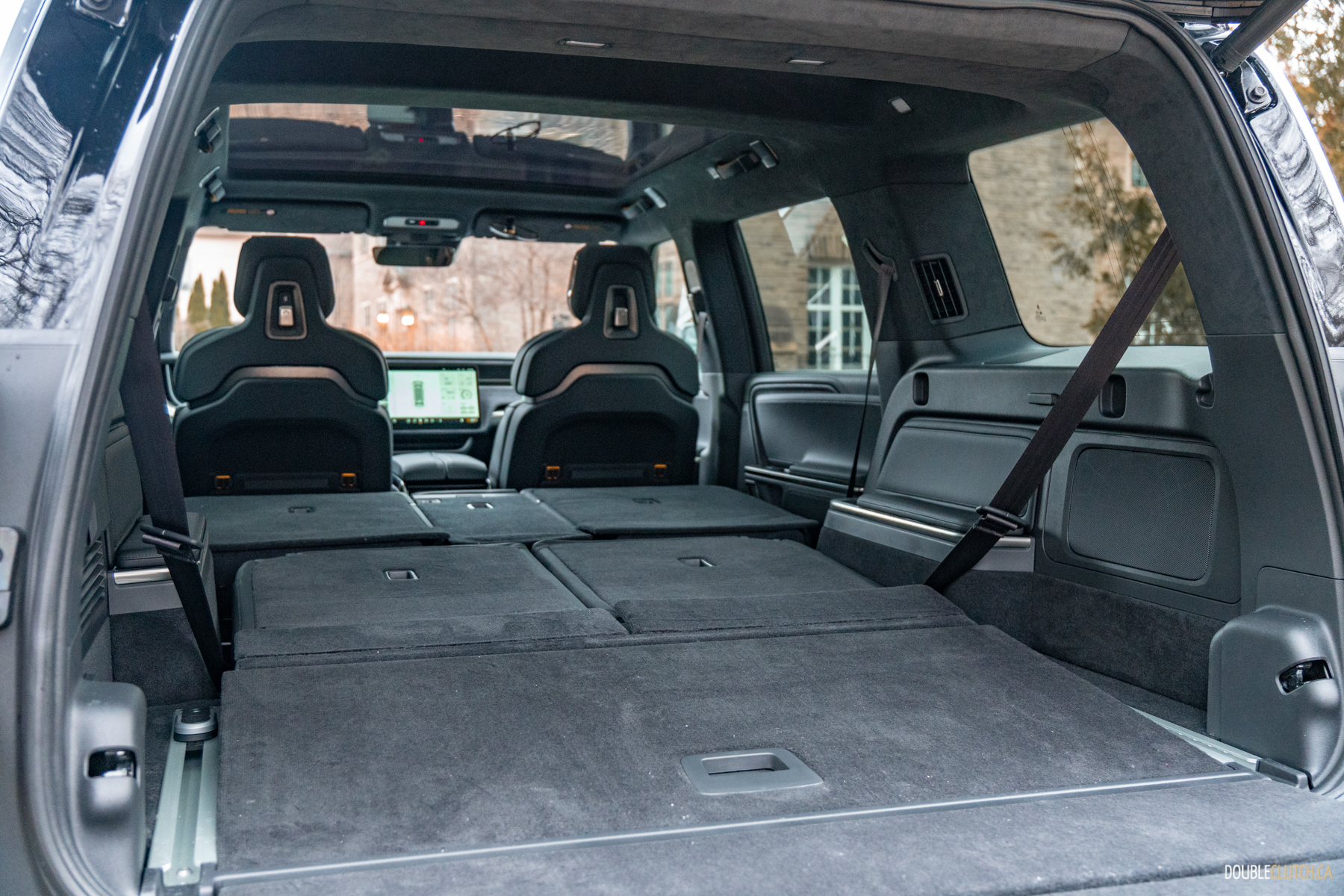
On the paved roads leading to those adventures, the R1S drives exceptionally well. It feels organic and easy to pilot, with well-weighted and sharp steering, and natural and linear pedal response that carefully avoids most of the awkwardness that holds back a lot of EVs from feeling like premium products. Road and wind noise are more than quiet enough to be inoffensive, but the R1S definitely isn’t the quietest, probably not helped by the boxy silhouette. With the air suspension in soft mode, the R1S rides quiet well and soaks up bumps like the best of them, for the most part.
In stiff mode, when combined with its low centre-of-gravity enabled by the skateboard chassis design, the R1S handles great, with little roll and impressive body control especially given how much body there is to control. It’s roughly in the same league as the BMW X7 and big-body Range Rover, using engineering trickery to hide their scale and handle bewilderingly well. As you might expect, the R1S’ party trick is that it’s significantly quicker than either of them, by virtue of it being motivated by bottled lightning, always quicker on the draw than dead dinosaurs.
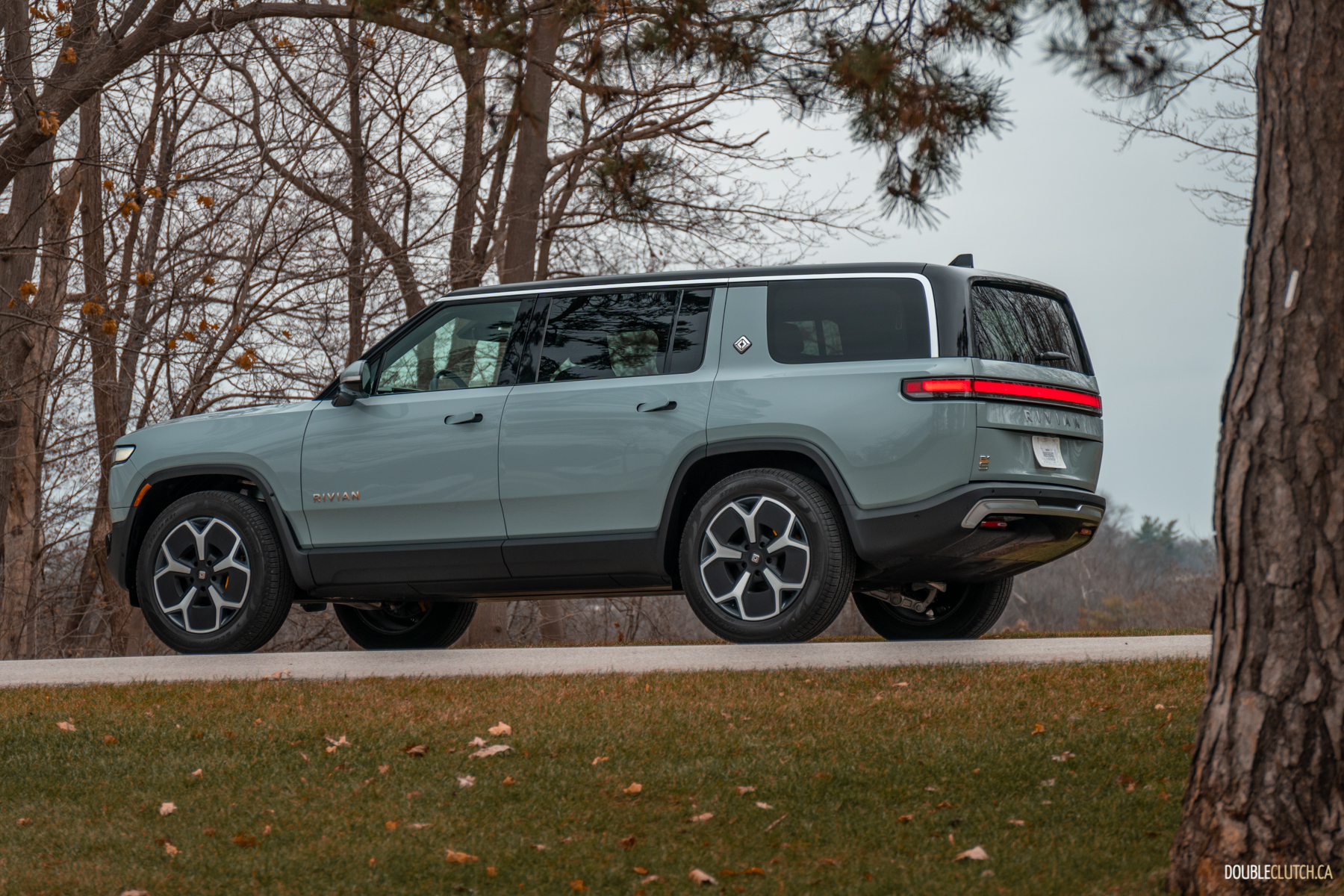
The R1S fell a little short in a few areas. First off, while generally compliant, the ride has some issues with secondary vibrations and can be a little harsh over sharper imperfections. It almost feels like the wheels are too big, where it can swallow a speed bump like nothing happened and then shudder over an expansion joint; the 21-inch wheels are the smallest available and definitely aren’t too big. Further, there’s almost a bit of a rattle from the undercarriage, which I’d be inclined to excuse on a traditional truck, but not on a six-figure, air-sprung EV.
There are a few more nitpicks inside the R1S — and these are nitpicks, because at $139,900 as-tested, we can do that. The third row is manually operated only and unlocked by a lever on the shoulder, which is hard to reach when they’re up and very hard to reach when they’re down, necessitating some climbing. And while the second row will fold forward and/or down at the touch of a button, they only return up manually, and require further manual manipulation to return them to a natural position.
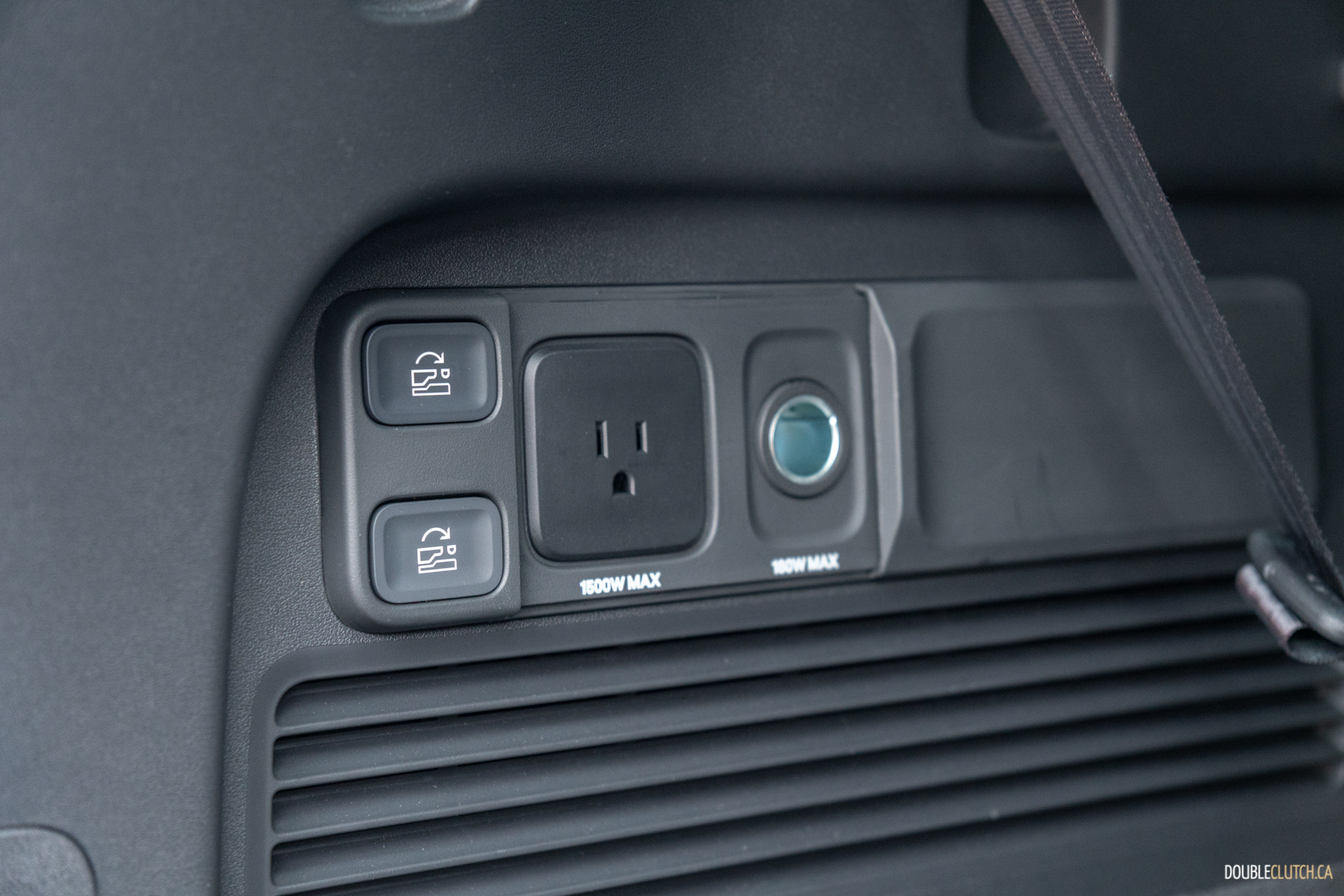
There’s a couple more issues with the R1S that are more matter-of-taste than anything, like the fact that one-pedal driving and auto-hold are always on, with no option to turn them off. If you like actually using the brakes and having the creep of a traditional car, you’re out of luck here. Speaking of, if you’re a die-hard Android Auto and/or Apple CarPlay user, you’ll be disappointed too, as they are missing from the R1S. Lastly, and this may be the snobbiest complaint I’ve ever made: the only organic material in the cabin is the thin wood veneer, and all the “leathers” are fundamentally plastic. You get the real stuff in the dead-dino competition.
Those quibbles aside, the 2024 Rivian R1S is an extremely impressive vehicle, made all the more impressive given that it’s from a brand-new company that shouldn’t be this good. I’m not sure it does anything groundbreaking, but the R1S nails the fundamentals: it looks and drives great, and it’s genuinely practical and usable. Given the amount of long looks I got while driving this R1S, I have no doubt Rivian sell every single one they can build.

